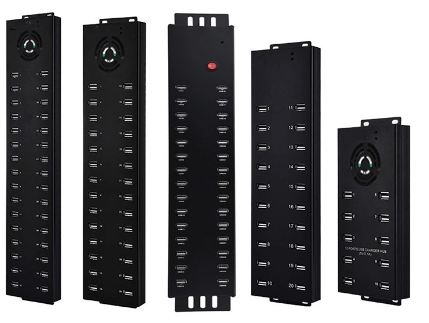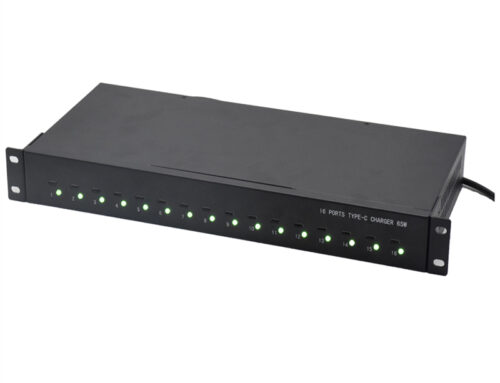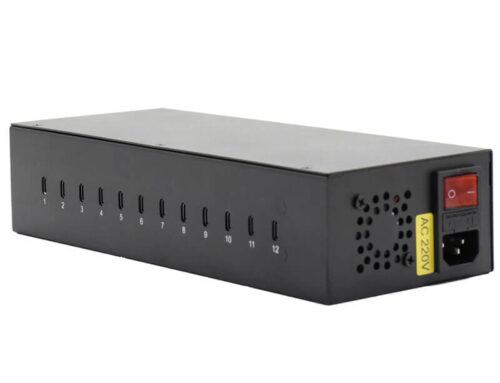How to choose the industrial USB Hub for your devices, people is looking for the USB HUB which require the high power usb hub and support multi-ports usb extension from the computer. You need to know the below infos( 1. What is the USB and USB Version? 2. What is the USB HUB? What is the Industrial USB HUB? )
First, let us know about the USB Definition.
What is the USB?
A USB hub is a device that expands a single Universal Serial Bus (USB) port into several so that there are more ports available to connect devices to a host system, similar to a power strip. All devices connected through a USB hub share the bandwidth available to that hub.[1]
You can click to know https://en.wikipedia.org/wiki/USB_hub
USB, short for Universal Serial Bus, is a standard type of connection for many different kinds of devices.
Generally, USB refers to the types of cables and connectors used to connect these many types of external devices to computers.
USB Versions
There have been three major USB standards, 3.1 being the newest:
USB 3.1: Called Superspeed+, USB 3.1 compliant devices are able to transfer data at 10 Gbps (10,240 Mbps).
Ultra high speed + . USB 3.1 GEN2 has a theoretical greatest speed of 10 gbps, twice that of USB 3.0.
- USB 3.0: Called SuperSpeed USB, USB 3.0 compliant hardware can reach a greatest transmission rate of 5 Gbps (5,120 Mbps).
USB 3.0 can support up to 5.0 gbps, 10 times faster than USB 2.0’s 480 mbps greatest theoretical speed. USB 3.0 sockets are usually blue; the USB 3.0 hub can external hard drives, USB drives, or blu-ray recorders will great reduce data transfer time.
- USB 2.0: Called High-Speed USB, USB 2.0 compliant devices can reach a greatest transmission rate of 480 Mbps.
- USB 1.1: Called Full Speed USB, USB 1.1 devices can reach a greatest transmission rate of 12 Mbps.
Most USB devices and cables today adhere to USB 2.0, and a growing number to USB 3.0.
- USB Type C: Often referred to simplyas USB-C, these plugs and receptacles are rectangular in shape with four rounded corners. Only USB 3.1 Type C plugs and receptacles (and thus cables) exist but adapters for backward compatibility with USB 3.0 and 2.0 connectors are available.
- USB Type A: Officiallycalled USB Standard-A, these plugs and receptacles are rectangular in shape and are the most commonlyseen USB connectors. USB 1.1 Type A, USB 2.0 Type A and USB 3.0 Type A plugs and receptacles are physically compatible.
- USB Type B: Officiallycalled USB Standard-B, these plugs and receptacles are square shaped with an extra notch on top, most noticeable on USB 3.0 Type B connectors. USB 1.1 Type B and USB 2.0 Type B plugs are physicallycompatible with USB 3.0 Type B receptacles but USB 3.0 Type B plugs are not compatible with USB 2.0 Type B or USB 1.1 Type B receptacles.
- A USB Powered-B connector is also specified in the USB 3.0 standard. This receptacle is physicallycompatible with USB 1.1 and USB 2.0 Standard-B plugs, and of course, USB 3.0 Standard-B and Powered-B plugs as well.
- USB Micro-A: USB 3.0 Micro-A plugs look like two different rectangular plugs fused together, one slightlylonger than the other. USB 3.0 Micro-A plugs are only compatible with USB 3.0 Micro-AB receptacles.
- USB 2.0 Micro-A plugs are very small and rectangular in shape, resembling in many ways a shrunken USB Type A plug. USB Micro-A plugs are physicallycompatible with both USB 2.0 and USB 3.0 Micro-AB receptacles.
- USB Micro-B: USB 3.0 Micro-B plugs look almost identical to USB 3.0 Micro-A plugs in that they appear as two individual, but connected, plugs. USB 3.0 Micro-B plugs are compatible with both USB 3.0 Micro-B receptacles and USB 3.0 Micro-AB receptacles.
- USB 2.0 Micro-B plugs are very small and rectangular but the two corners on one of the long sides are beveled. USB Micro-B plugs are physicallycompatible with both USB 2.0 Micro-B and Micro-AB receptacles, as well as USB 3.0 Micro-B and Micro-AB receptacles.
- USB Mini-A: The USB 2.0 Mini-A plug is rectangular in shape but one side is more rounded. USB Mini-A plugs are only compatible with USB Mini-AB receptacles. There is no USB 3.0 Mini-A connector.
- USB Mini-B: The USB 2.0 Mini-B plug is rectangular in shape with a small indention on either side, almost looking like a stretched out piece of bread when looking at it head-on. USB Mini-B plugs are physicallycompatible with both USB 2.0 Mini-B and Mini-AB receptacles. There is no USB 3.0 Mini-B connector.
2. What is the USB HUB?
A USB hub is a device that expands a single Universal Serial Bus (USB) port into several so that there are more ports available to connect devices to a host.When you want to add more and more devices to your trusty laptop or desktop, then a USB hub could be just what you need. It is very small and can be used it on the desk, it can be used it on the desk and can be connect the computer.
- What is the Industrial USB HUB?
Industrial grade multi-port options to OEM embedded modules, these cost-effective USB hubs provide flexibility reliability and high performance; Industry grade usb hub which tough connectivity and expansion for manufacturing, warehouse and other harsh environment, which require in demanding installations, aslo need to take their from a supplied AC or built-in high power supply to provide the large current.
The industrial usb hub should meet the below requirements ( basic advantages)
- The industrial USB HUB which Each USB port port features individual short circuit protection;Protects against damage to connected devices- suitable for use with USB laboratory, medical and business critical equipment( such as, flight case charger, charging cabinet etc. )
- Provides 7 USB 2.0/USB 3.0High Speed ports with data rates up to 480Mbps and 5GBPS.
- Hard-wearing USB Hub – Perfect for industrial applications;
- Integrated brackets design, for mounting securely, for example in a server rack, cabinet on a work bench or wall etc.
Ladagogo’s USB hubs provide a USB port expansion solution for USB 2.0 /USB 3.0 applications where ultra power consumption and board space are a concern such as docking stations, point-of-sale terminals, USB port expansion, test instrumentation, factory automation and other industrial applications. LADAGOGO’s USB hub with the design for industrial area using these devices can easily add USB connectivity and stay within the stringent size, power and cost requirements of leading edge computing and industrial applications.
Ladagogo Industrial USB HUB Series design
Industrial USB Hub with 4/7/10/16/20/30/32/ 40/60 Ports feature a rugged metal enclosure.
Industrial grade rugged metal housing enclosure design to withstand harsh industrial environments;
Discover industry grade USB hubs from Ladagogo. Tough connectivity and expansion for manufacturing, warehouse and other harsh environments.
When connecting multiple USB peripherals to PCs in challenging and rugged environments, tough reliable solutions are required. Ladagogo Industrial USB hubs combine proven high performance ladagogo USB technology with robust and sturdy all metal housings.
Ladagogo industrial USB HUB Features;
High performance: Available with High Speed USB 2.0 and SuperSpeed USB 3.0 connections.
VERSATILE
Provides 4/7/10/13/16/20/28/30/32 additional USB ports from a single connection on desktop or laptop computer
DEPENDABLE
Proven LADAGOO technology with a tough all metal design and brackets for secure installation.
SELF POWERED
Each ports current is more than 1A provided;
OPERATION
For maximum performance required in demanding installations, these hubs take their power from a supplied AC adapter
Multi-port (4/7/10/13/16/20/28/30/32/ 40/ 60 ports usb hub)
Provides a convenient single point of connection to a whole host of peripherals including legacy USB 1.1 peripherals as well as faster USB 2.0 and USB 3.0 devices.
OVER CURRENT PROTECTION
Protects against damage to connected devices – ideal for use with USB laboratory, medical and business critical equipment.
INTEGRATED BRACKETS
For mounting securely, for example in a server rack, cabinet, on a work bench or wall, or in a ceiling void
Applications
For the extension of USB ports in industrial environments, e.g. for
- automation (connection sensors, gauges, etc.)
- manufacturing (analyzers, cameras, etc.)
- process control (connection of peripheral devices, etc.)
- And many more!





